The Dunes Golf and Beach Club has been the course in Myrtle Beach which intrigued me most so I was excited to play 36 holes there during my spring 2021 visit. For some reason that I can’t remember, I didn’t arrange to play here on my previous 2007 Myrtle Beach. I remember looking into it but then not pulling the trigger for some reason.
That’s just as well for the sake of my more recent self because I meant that I had this course to look forward to. The Dunes has intrigued me because I’ve seen to it referred to several times and one of Robert Trent Jones Sr.’s best courses or even his best course. I haven’t played many Trent Jones courses but the few that I’ve played have all seemed similar to me: heavy fairway bunkering, often on both sides of the fairway, and heavy greenside bunkering, in many cases surrounding the greens. I was interested to see whether his style on this course, built early in his career (1948) differed from that of his later courses. Perhaps his earlier work was a bit more strategic and it became more target-oriented and penal later (like after his revision of Oakland Hills).
Nope—this is a Trent Jones course like most of the others with narrow, bunkered fairways and heavily bunkered greens. One difference may be that the greens on the Dunes aren’t too large—but this just makes the Dunes one of the most challenging courses that I’ve played, especially on the iron game. More than any other course that I’ve played, the Dunes demands consistently well-struck, high iron shots. If this isn’t your strength, you’re gonna have a rough time with this course.
I was a bit disappointed by the lack of variety in the course. The drives and approaches to the greens felt pretty similar. Almost every green has bunkers left and right and many have them front and back too. This diminishes the importance of where in the fairway you place your drives—although just hitting the fairways here given their narrowness is an accomplishment.
Having said that, I liked the course overall. Its major strength is the excellent piece of property; gently rolling with plenty of frontage on the area’s coastal marshes. And Trent Jones’ routing is excellent, easily walkable with most greens perched on natural rises and excellent use of the marsh. The latter is most noteworthy on the famous 90 degree+ dogleg right, long par 5 thirteenth, which is one of the best par 5s that I’ve played.
In general as I’ve become a better player, courses like this appeal to me more. It fits the ‘tough but fair’ cliche, but the more courses that I’ve played, the more I realize that it’s an accomplishment to have 18 consistently strong holes without any stupid or weak ones. This certainly characterizes the Dunes. And while angles into the greens may not be so important, the fairway bunkering patterns are varied and someone who can shape the ball off the tee will be at a great advantage over someone who cannot. Simply put, this is a real golfer’s course, fitting for a course that has hosted several professional tournaments. And I couldn’t help but think that the course would be an excellent venue for the PGA Championship now that it’s been moved up to May.
Get comfortable with the look and feel of the medium-long par 4 first hole because you’re going to encounter drives like this one several times during the round. The fairway bunkers are staggered with the first on the right from about 230-250 and the second on the left about 275 out. I mentioned in my intro that angles from the fairway aren’t so important and that isn’t quite right. Here as at many greens there are front-left and front-right bunkers and the green angles behind these. So whichever side the pin is on, you’ll have a slightly better angle from the opposite side of the fairway.
But in any case trajectory, spin, and distance control are more important than angle because you can’t run the ball onto most of the greens.
That’s just as well for the sake of my more recent self because I meant that I had this course to look forward to. The Dunes has intrigued me because I’ve seen to it referred to several times and one of Robert Trent Jones Sr.’s best courses or even his best course. I haven’t played many Trent Jones courses but the few that I’ve played have all seemed similar to me: heavy fairway bunkering, often on both sides of the fairway, and heavy greenside bunkering, in many cases surrounding the greens. I was interested to see whether his style on this course, built early in his career (1948) differed from that of his later courses. Perhaps his earlier work was a bit more strategic and it became more target-oriented and penal later (like after his revision of Oakland Hills).
Nope—this is a Trent Jones course like most of the others with narrow, bunkered fairways and heavily bunkered greens. One difference may be that the greens on the Dunes aren’t too large—but this just makes the Dunes one of the most challenging courses that I’ve played, especially on the iron game. More than any other course that I’ve played, the Dunes demands consistently well-struck, high iron shots. If this isn’t your strength, you’re gonna have a rough time with this course.
I was a bit disappointed by the lack of variety in the course. The drives and approaches to the greens felt pretty similar. Almost every green has bunkers left and right and many have them front and back too. This diminishes the importance of where in the fairway you place your drives—although just hitting the fairways here given their narrowness is an accomplishment.
Having said that, I liked the course overall. Its major strength is the excellent piece of property; gently rolling with plenty of frontage on the area’s coastal marshes. And Trent Jones’ routing is excellent, easily walkable with most greens perched on natural rises and excellent use of the marsh. The latter is most noteworthy on the famous 90 degree+ dogleg right, long par 5 thirteenth, which is one of the best par 5s that I’ve played.
In general as I’ve become a better player, courses like this appeal to me more. It fits the ‘tough but fair’ cliche, but the more courses that I’ve played, the more I realize that it’s an accomplishment to have 18 consistently strong holes without any stupid or weak ones. This certainly characterizes the Dunes. And while angles into the greens may not be so important, the fairway bunkering patterns are varied and someone who can shape the ball off the tee will be at a great advantage over someone who cannot. Simply put, this is a real golfer’s course, fitting for a course that has hosted several professional tournaments. And I couldn’t help but think that the course would be an excellent venue for the PGA Championship now that it’s been moved up to May.
Get comfortable with the look and feel of the medium-long par 4 first hole because you’re going to encounter drives like this one several times during the round. The fairway bunkers are staggered with the first on the right from about 230-250 and the second on the left about 275 out. I mentioned in my intro that angles from the fairway aren’t so important and that isn’t quite right. Here as at many greens there are front-left and front-right bunkers and the green angles behind these. So whichever side the pin is on, you’ll have a slightly better angle from the opposite side of the fairway.
But in any case trajectory, spin, and distance control are more important than angle because you can’t run the ball onto most of the greens.
The similar length par 4 second illustrates the importance of shaping the ball off the tee on this course. The fairway turns ends at fairway bunkers at about the 230-240 range and turns left. Unless you can pop a high ball over the trees on the left, you either need to (1) layup and have a long approach to an elevated, well-defended green or (2) hit a draw around the corner. I opted for (1) and had a 6-iron into a green which, as you can see, is not great for hitting a 6-iron.
Three is another medium-long par 4 that’s a bit more open off the tee. Unlike most holes, there’s some room to run the ball onto the green here. Also, the green is quite large, which makes this one of the course’s easier par 4s.
Like two, shaping your drive right-to-left is critical on the short par 5 fourth. Depending on which tees you’re playing, it’s about a 220-250 carry over the bunkers in the left corner of the fairway. Ideally you’d carry these with a bit of a draw. If you pick a line too far right and hit it straight, you can easily run through the fairway. The layup is straightforward.
But if you’re going for the green, the shot is thrilling. Yes it’s just a carry over a pond and anyone can do that. But—and maybe it’s because the hole is just the right length for me—the combination of a drive that if I pulled of just right left me a yardage that was doable (~210) but which required a well-struck iron shot made the hole really exciting to play. It’s certainly heroic but it’s also strategic—if you take on more risk of the tee, your reward is being able to reach the green. And then you get to do it again but this time if you fail, it’s a drop.
The mid-iron par 3 fifth is a pretty similar shot to most of the par 4 approaches. Aim to the middle of the green for safety or carry the bunker/shape your iron at higher risk to get close if the pin is on one of the wings.
Six is another ~400-415 yard (from the second-to-back tees) with a very tough tee shot. The issue here is that while there’s a bunker on the left if you push it right, the further you go, the easier it is to run into the live oaks. Again, only real bombers will be able to carry the fairway bunkers (~270). If you can consistently carry the fairway bunkers, you need to move back a set of tees.
Seven is very similar to the previous hole off the tee but the approach is different: this time the green is wide and shallow with a bunker right in the middle in the front. A long drive is important here so that you can hit something with enough loft to carry the bunker and stop your ball on the green. This will be a very difficult approach for most.
Same deal with two bunkers left off the tee on the ~515 yard par 5 eighth and bunkers fronting the green. You’d have to hit a very long drive to consider going for this one in two because over the green is a short grass swale. Actually going for the green might not be so bad if you miss on the right side and can pitch uphill into the length of the green. Otherwise layup to your favorite yardage short of the bunkers that start 90 yards short of the green.
The starter tells you to look right of the green when you play the par 3 ninth because it’s the one time that you get to see the ocean. But the heavily bunkered, wide-yet-shallow green was commanding my entire attention. For a course that’s long on demanding iron shots, this is one of the most demanding. I can’t imagine playing into this green from the 220 yard back tees…although I guess for Bryson, Brooks, and the bunch that’d only be a 6 or a 7-iron anyway, which is what I hit from the ~170 blue tees.
The back nine begins with a shorter par 4 (~350) that substitutes a blind pond for fairway bunkers. The pond is about 265 from the blues, so stay short of that. The fairway is quite wide short of the pond and if the pin’s on the right, you can give yourself a better angle by playing well to the left.
Eleven is another just-under 400 yard par 4 but with a bit of a different look to previous holes as it borders the marsh on the right. The marsh doesn’t (or I should say shouldn’t) come into play off the tee but if you hit it >280, you either need to move back a set of tees or play a bit to the left (over the edge of the bunker) because the marsh sneaks in on the right at about 290. In fact, left off the tee generally gives you a better angle into the green because the green is deepest from here.
Unless you’re playing the 245 yard championship tees (I’m not even sure where they are), the twelfth is probably the most straightforward and easiest hole on the course.
Neither straightforward nor easy is the famous par 5 thirteenth but it’s certainly none the worse for that. This is a truly great hole. The water runs up the right side off the tee and the further you go, the more it narrows the fairway. But it’s important not to stray too far away from it because that makes the absolutely heroic second shot much more difficult.
The second shot is probably the best that I’ve seen on a par 5 (the similar eleventh on Blackwolf Run—River is close). If you’ve hit a 260 yard drive into the middle of the fairway, you’ve only got about 150 to reach the second inlet but the water is omnipresent up the right and it’s natural to place safe a bit further to the left. If you overdo this, you can run into the trees. A perfectly placed drive of 280 would give you a shot at the green but the water cuts in again at about 200 and you’d better be sure to hit your approach solidly.
But remember, many will have shied away from the water. A 250 yard drive in the left rough leaves you >160 minimum to carry past the first inlet. Anything shorter and you’ll have to play short of this and probably won’t reach the green in three. It’s really important not to be too far from the water off the tee here because it makes the second much more difficult.
But remember, many will have shied away from the water. A 250 yard drive in the left rough leaves you >160 minimum to carry past the first inlet. Anything shorter and you’ll have to play short of this and probably won’t reach the green in three. It’s really important not to be too far from the water off the tee here because it makes the second much more difficult.
The green is a bit of a weak point, having the standard front-left and front-right bunkers. It would have been better if Trent Jones had only bunkered the left side of the green so that the best angle in was from near the water on the right. But the pin on this day was in the back-left and with this pin, that’s how the hole plays anyway.
Fourteen is yet another tough, medium-long par 4 with bunkers left off the tee and front-left, right, and back bunkers. Like six, you can run through the fairway into the live oaks on the right if you hang one out here.
Fifteen is a very awkward short par 5 that features another blind water hazard, this time short of the bunkers on the right. It shouldn’t be a problem unless you mishit your drive or are playing too far back. The two fairway bunkers on the right, on the other hand, will be a problem for everyone. Only one bunker in front of this green but it’s big and the green is quite elevated and deep, but narrow. It demands a very precise iron shot and misses, especially deep, will be punished with very difficult pitches.
Stay short of the lone fairway bunker about 250 out on the right on the par 4 sixteenth…because the hole is only 350 and you don’t need to go any further than this. The green is completely encircled by bunkers and pitches pretty good from back-to-front.
I feel like the par 3 seventh is kind-of a Trent Jones par 3 template: wide, shallow green with big bunkers front-right and front-left and another build into a mound behind the middle of the green. You see this exact same hole at Ft. Belvoir near D.C. and at Oakland Hills—and, funny enough, in all three cases, it’s the seventeenth hole. Not my favorite but at least this one is only ~150 yards; the other two are ~200.
Appropriately, the Dunes concludes with one of its toughest holes. There are left and right tees here. The hole is a slight dogleg right from the right tees and a slight dogleg left from the left. We were on the left tees and while there are no fairway bunkers, it’s easy to run through the fairway into the trees on the right. You only want to go about 240 from the blues here, which sets up a short iron over a pond to another severe back-to-front pitched green. Again, nothing to do but be precise with your iron.
So that’s the Dunes, a course which I really wanted to see and which was in one sense disappointing but in another fulfilling. It was disappointing in its lack of variety; it felt like I was facing the same tee shot along bunkers and the same approach shot to an elevated green surrounded by bunkers on almost every hole. I thought that given this course’s consistently high placement near the top of Trent Jones’ portfolio, it would have done something a little different, at least once in awhile. But no, it’s the standard Trent Jones, different only in that there are probably a few more bunkers and the greens are even more consistently elevated than usual. It reminded me very much of his course at Boyne Highlands in northern Michigan—another notoriously hard course.
But as a low handicap golfer, I also found the course fulfilling. Simply put, you have to drive the ball well and hit your irons well. You also have to be thinking about your approaches into the greens because many have pretty good pitch and you need to stay below the hole. This is especially true because the maintenance of this course is impeccable and the greens are like putting on glass—even on this day when they had sanded them. There’s simply no way to a decent score here without good driving and excellent iron play, unless you have Seve-like skills from bunkers.
From a ratings standpoint, among it's Myrtle Beach brethren, I can’t place this course above the artful Caledonia, which possesses in spades the variety that this course lacks. But the Dunes is probably second, beating True Blue by a touch because of the latter's occasionally awkward holes and routing. The Dunes is still very good, worthy of placement in the top 100 public courses, although probably not its current top 50 spot (probably somewhere in the 75-90 range). And I’d wholeheartedly endorse this course as the site of a big tournament—it’s plenty long enough and I’m pretty sure that the smallish, elevated greens would give the pros plenty of trouble (Collin Morikawa would love this place). Now that they’re reverting all the classic major championship venues back to their original style (or at least a Gil Hanse version of it), it’d be nice to have an exemplar of the Trent Jones style. This course is certainly that.
But as a low handicap golfer, I also found the course fulfilling. Simply put, you have to drive the ball well and hit your irons well. You also have to be thinking about your approaches into the greens because many have pretty good pitch and you need to stay below the hole. This is especially true because the maintenance of this course is impeccable and the greens are like putting on glass—even on this day when they had sanded them. There’s simply no way to a decent score here without good driving and excellent iron play, unless you have Seve-like skills from bunkers.
From a ratings standpoint, among it's Myrtle Beach brethren, I can’t place this course above the artful Caledonia, which possesses in spades the variety that this course lacks. But the Dunes is probably second, beating True Blue by a touch because of the latter's occasionally awkward holes and routing. The Dunes is still very good, worthy of placement in the top 100 public courses, although probably not its current top 50 spot (probably somewhere in the 75-90 range). And I’d wholeheartedly endorse this course as the site of a big tournament—it’s plenty long enough and I’m pretty sure that the smallish, elevated greens would give the pros plenty of trouble (Collin Morikawa would love this place). Now that they’re reverting all the classic major championship venues back to their original style (or at least a Gil Hanse version of it), it’d be nice to have an exemplar of the Trent Jones style. This course is certainly that.








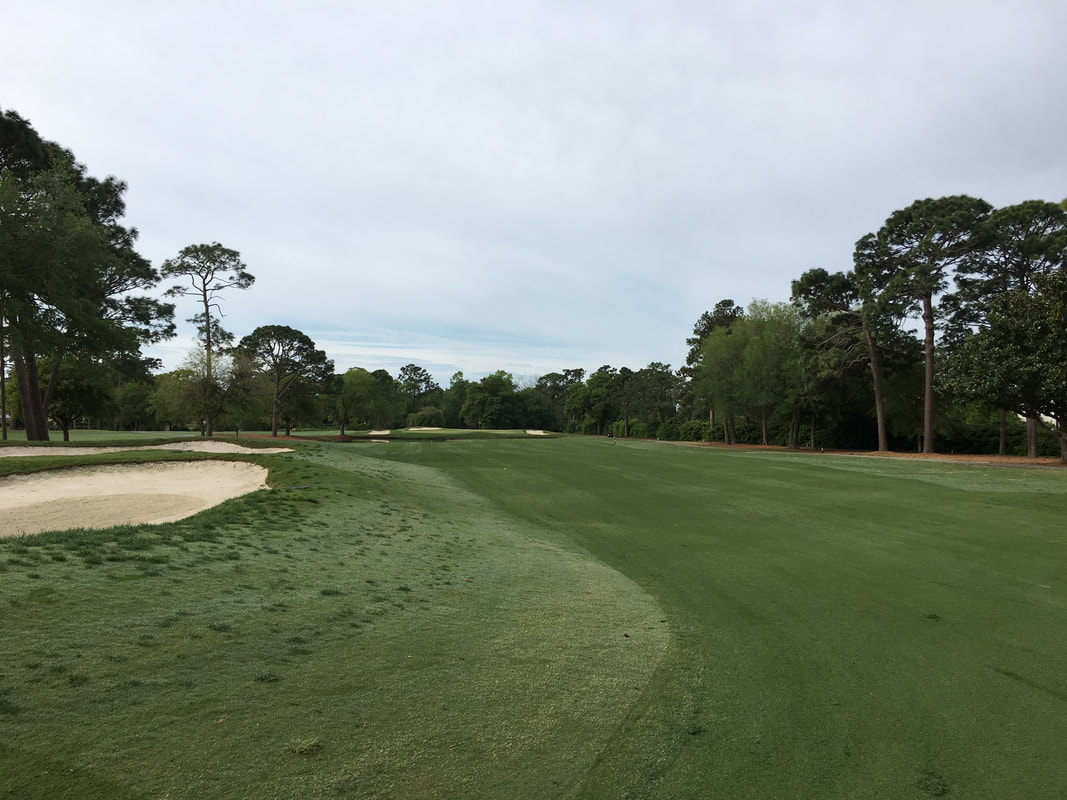


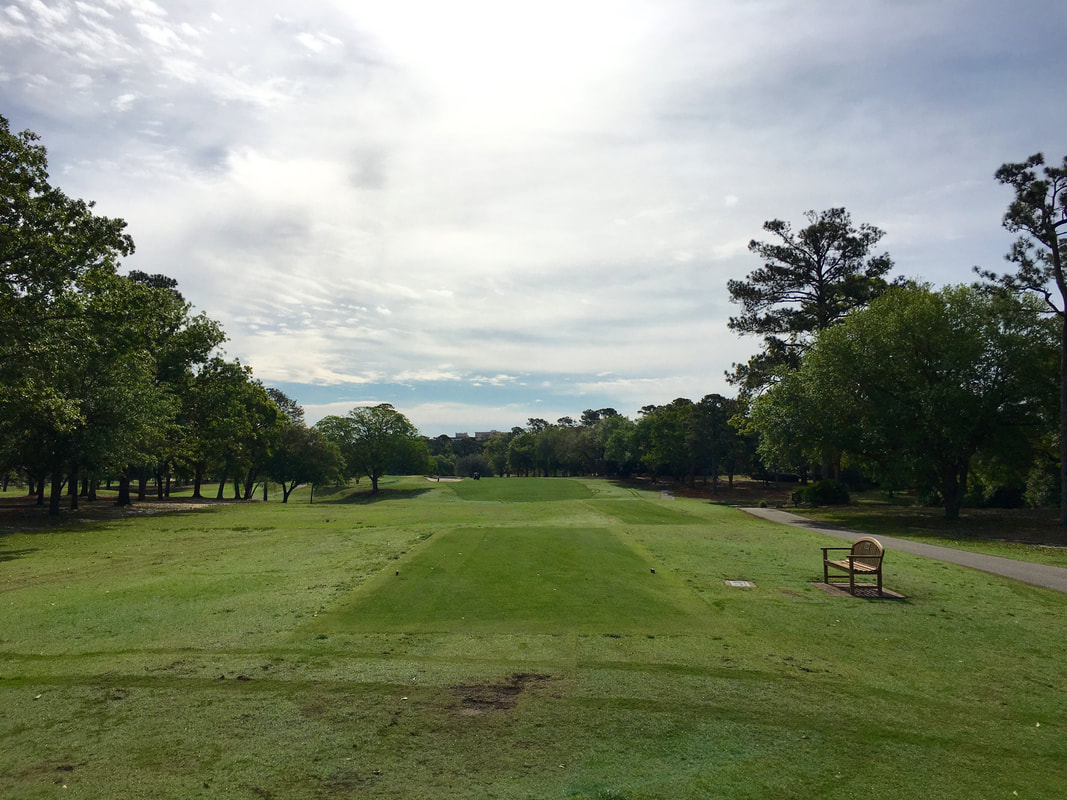


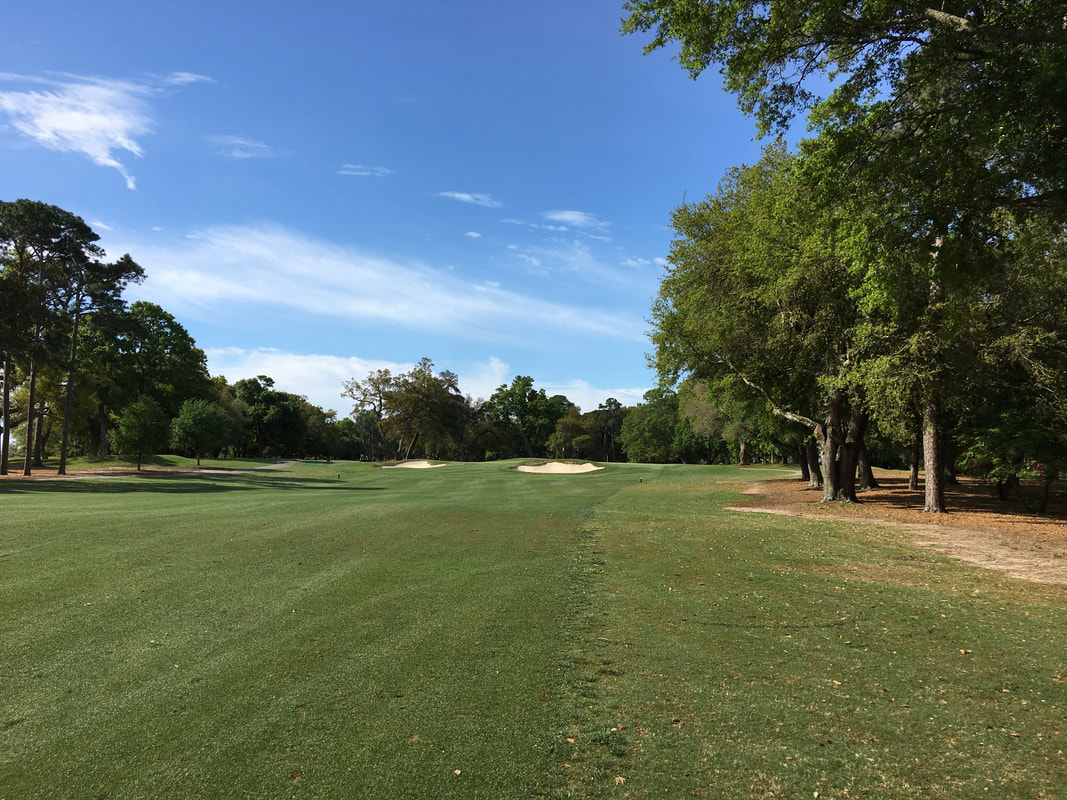

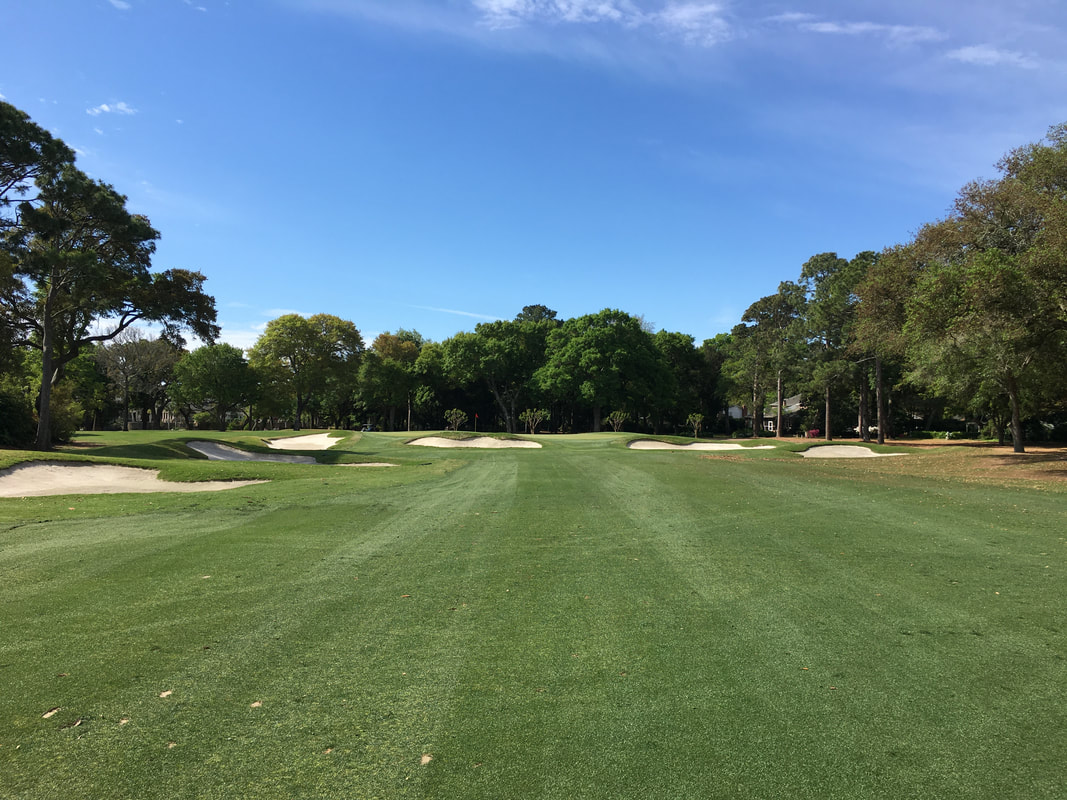

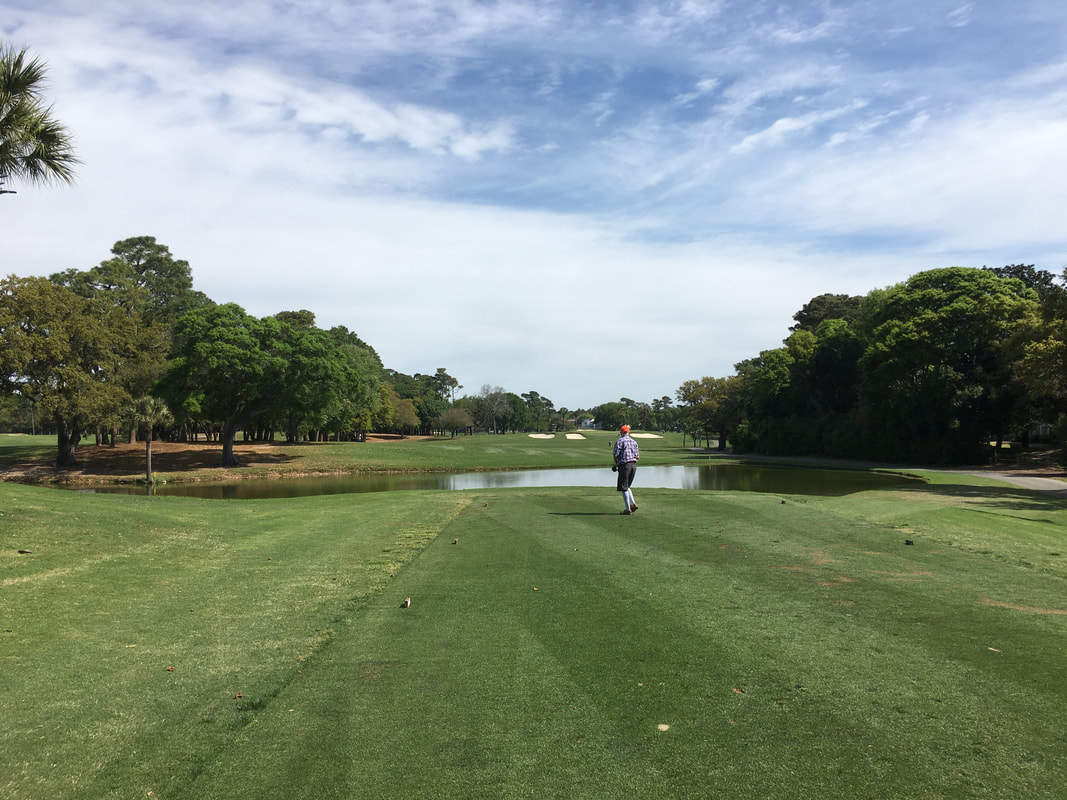




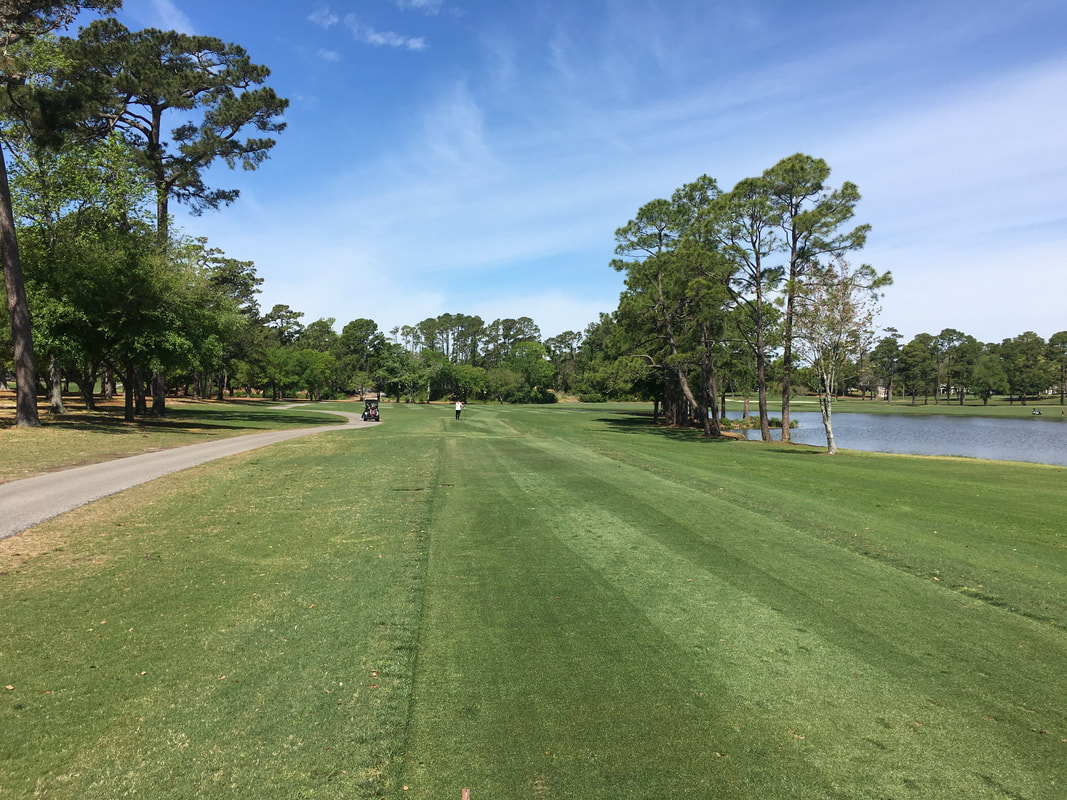



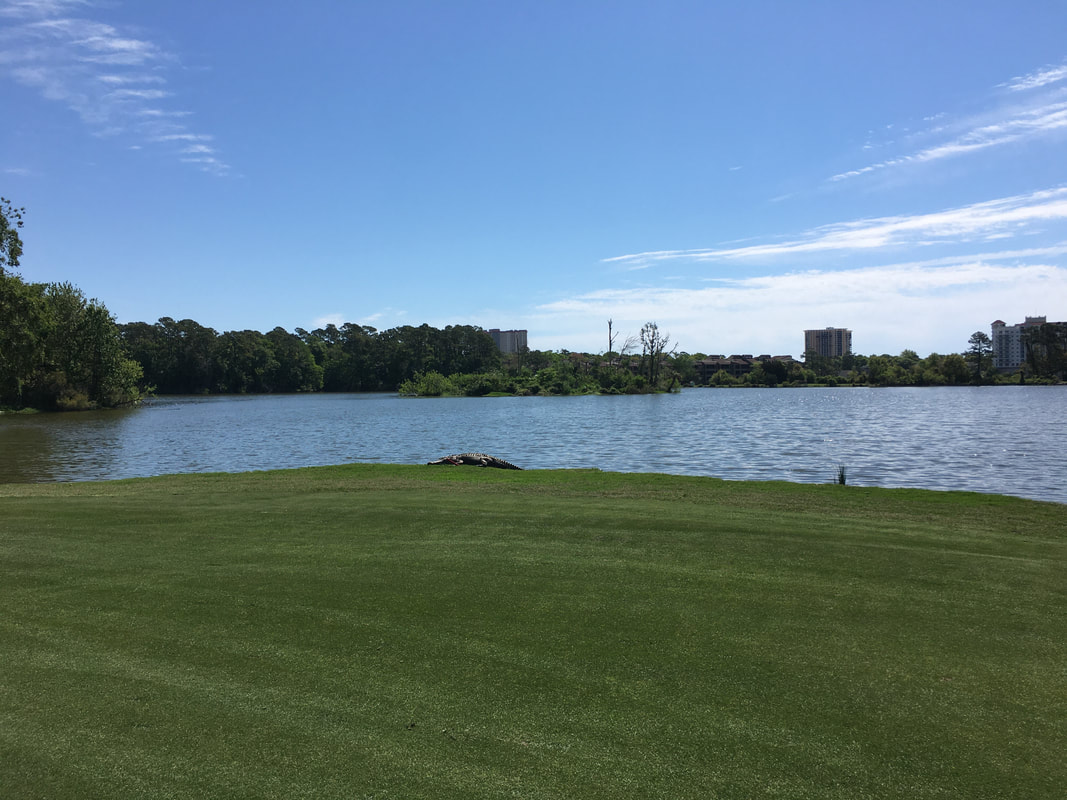








 RSS Feed
RSS Feed